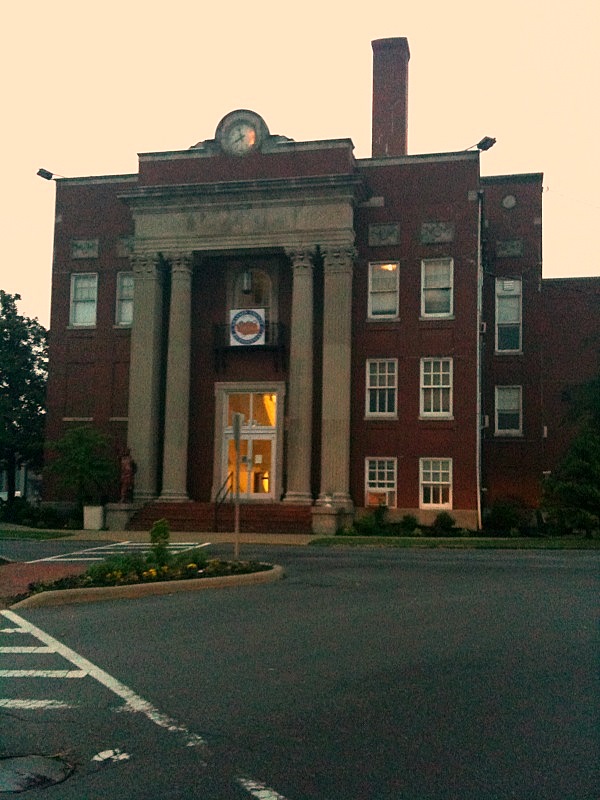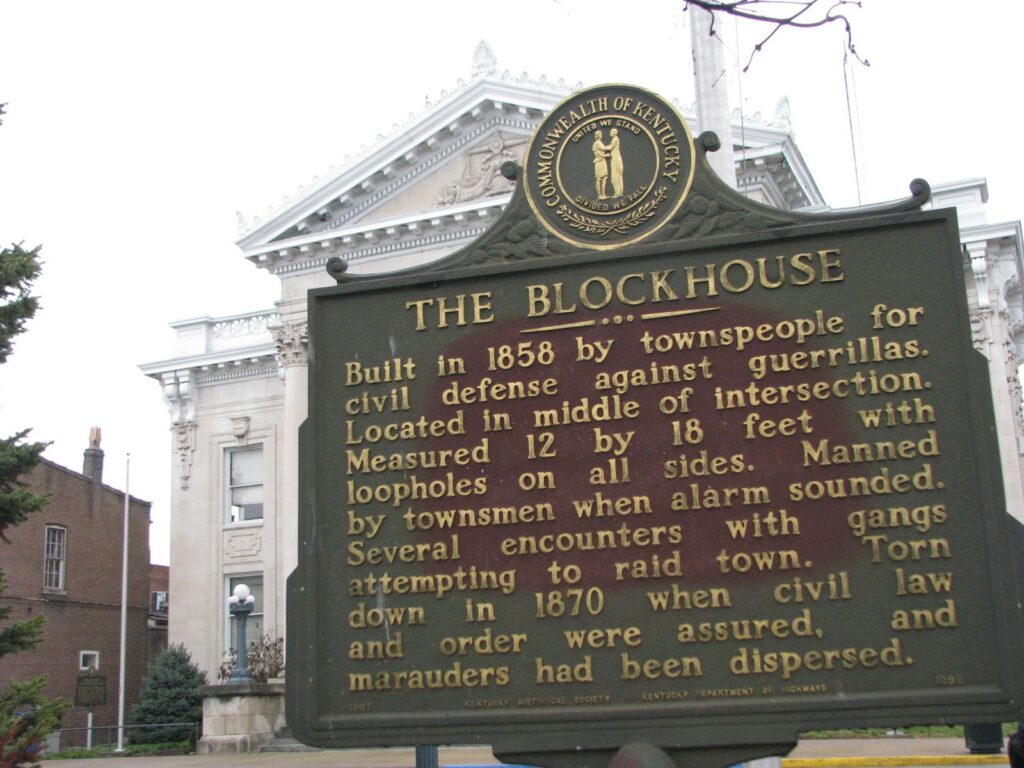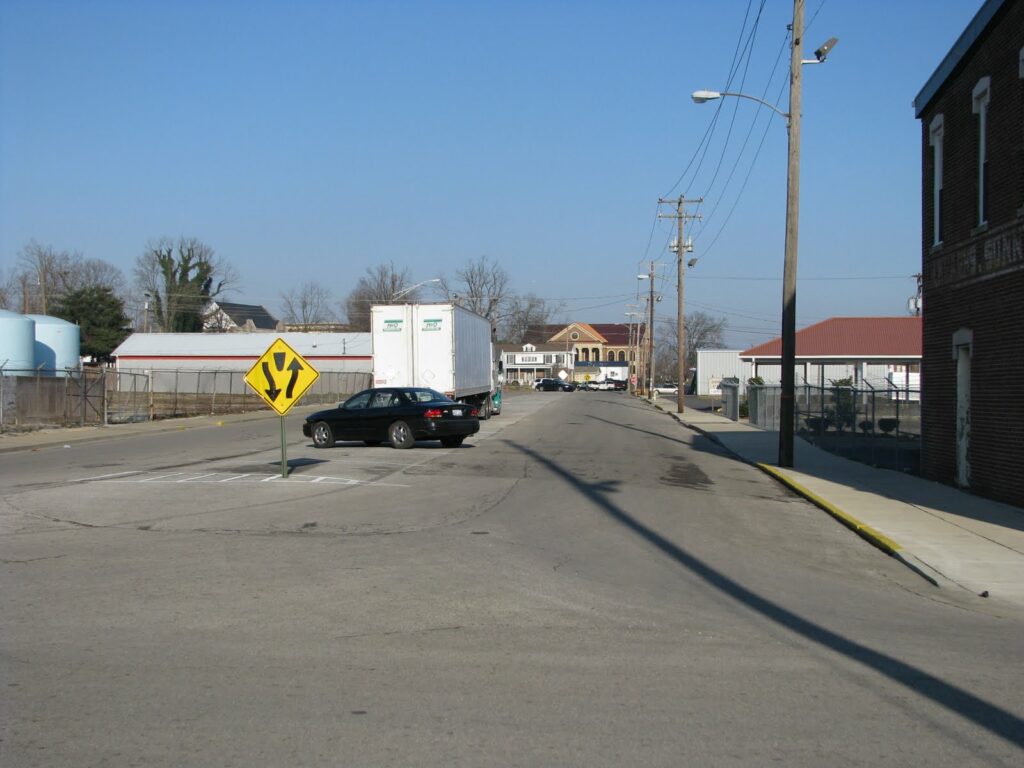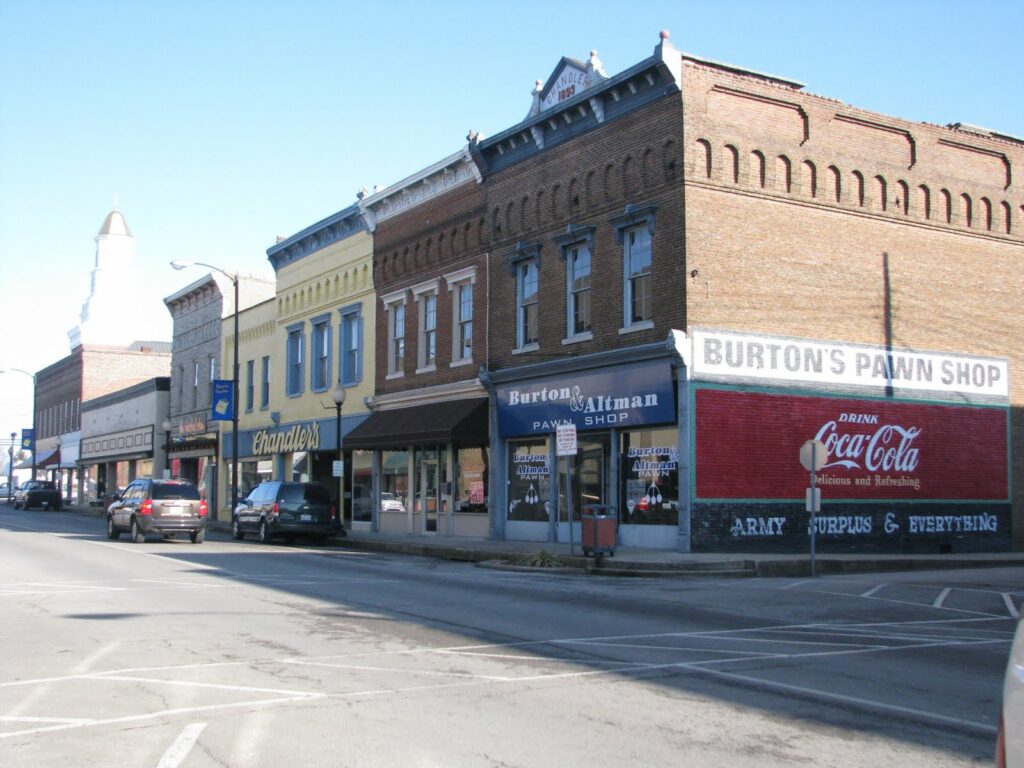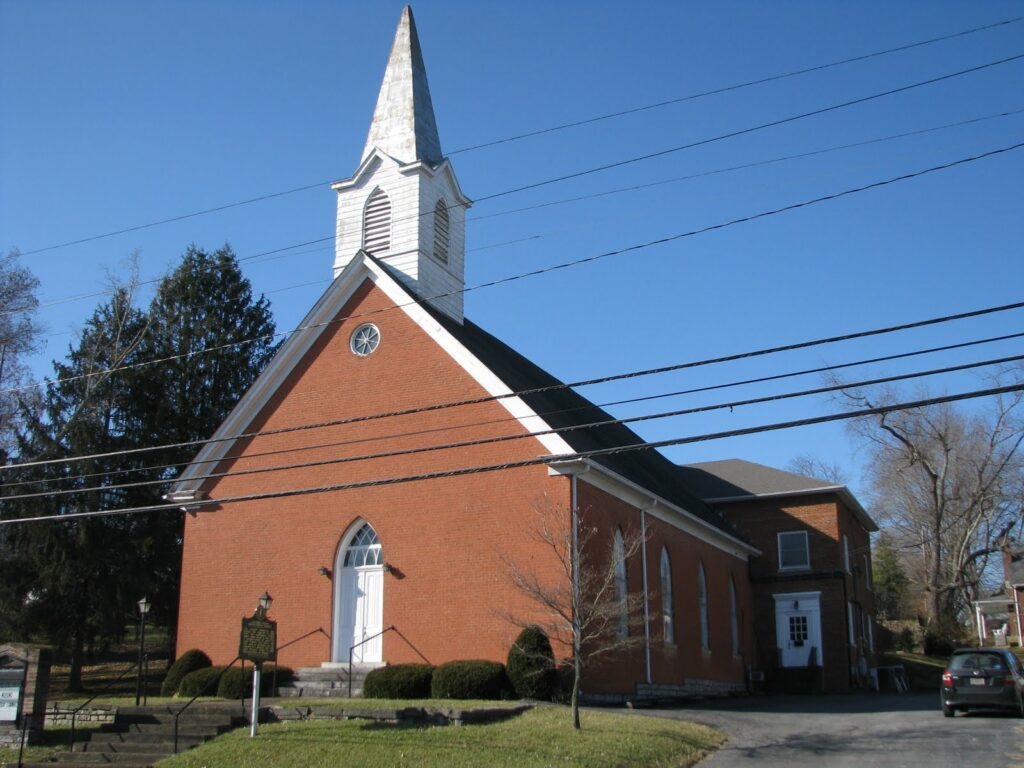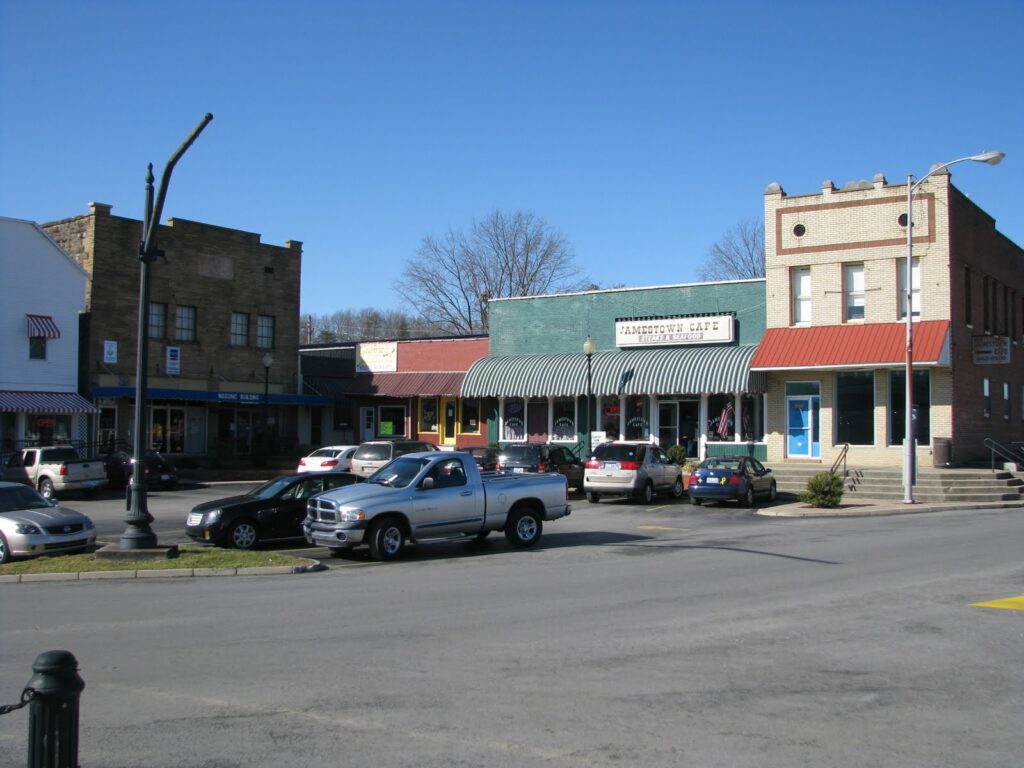 |
| Midway, Kentucky |
Midway, Kentucky is a bustling town in Woodford County. The land that would become Midway was purchased in 1835 by the Lexington & Ohio Railroad Company. Located “midway” between Lexington and Frankfort (and also “midway” between Versailles and Georgetown), the town was Kentucky’s first railroad down. Of course, its location as a great crossroads was already known from the importance of the nearby Offut-Cole Tavern. And a train still travels through the middle of town on Railroad Street (unlike LaGrange, the train doesn’t impede parallel traffic)
Historic Midway has so many stories, and it has many historic markers on its Railroad Street that shares those stories:
“Sue Mundy” Here, Marker 537:
Jerome Clarke, called Sue Mundy, one of Morgan’s Raiders, formed his own guerrilla band on Morgan’s death Sept. 1864. Clarke and band raided here November 1, 1864, killing Adam Harper. Four Confederate prisoners executed in reprisal by Union forces. On Feb. 2, 1865, Clarke returned with William Quantrill, another guerrilla leader, burned depot here and stole 15 horses.
Edward Dudley Brown (1850-1906), Marker 2027:
This well known African American horse owner, trainer, developer, and jockey was born into slavery, 1850. Raised as a stable boy near Midway, he was nicknamed “Brown Dick” after the record-setting racehorse of that name. Brown was associated with great horses such as Asteroid, Ducat, and Kingfisher. Presented by City of Midway and the Ky. African American Heritage Commission.
(Reverse) Noted Horseman – “Brown Dick” worked with Kentucky Derby winners Baden Baden (1877), Ben Brush (1896), and Plaudit (1898). He died at a friend’s house in Louisville, May 1906, of tuberculosis and was returned to Midway for burial. He was inducted into National Museum of Racing’s Hall of Fame on August 8, 1984. Presented by City of Midway and the Ky. African American Heritage Commission.
Midway, Marker 1580
First Kentucky town established by a railroad. In 1831, Lexington and Ohio Railroad Co. began railroad between Lexington and Frankfort and first train reached midway point, 1833. John Francisco farm bought by L&O in 1835; town of Midway laid out by R. C. Hewitt, civil engineer for railroad. Many streets named for L&O officials. Midway incorporated, 1846, by Ky. legislature.
Morgan at Midway, Marker 516:
Taking 300 abandoned USA horses and mules at Versailles, Morgan’s Raiders came here July 15, 1862. Advised of troop train approach from Frankfort he had tracks torn up and howitzers set. Train warned and returned to Frankfort. Morgan took telegraph line and coaxed train at Lexington to come on but it turned back. He and his men reached Georgetown that evening.
Besides its fascinating history, Midway is also the home to several great restaurants and antique shops.



